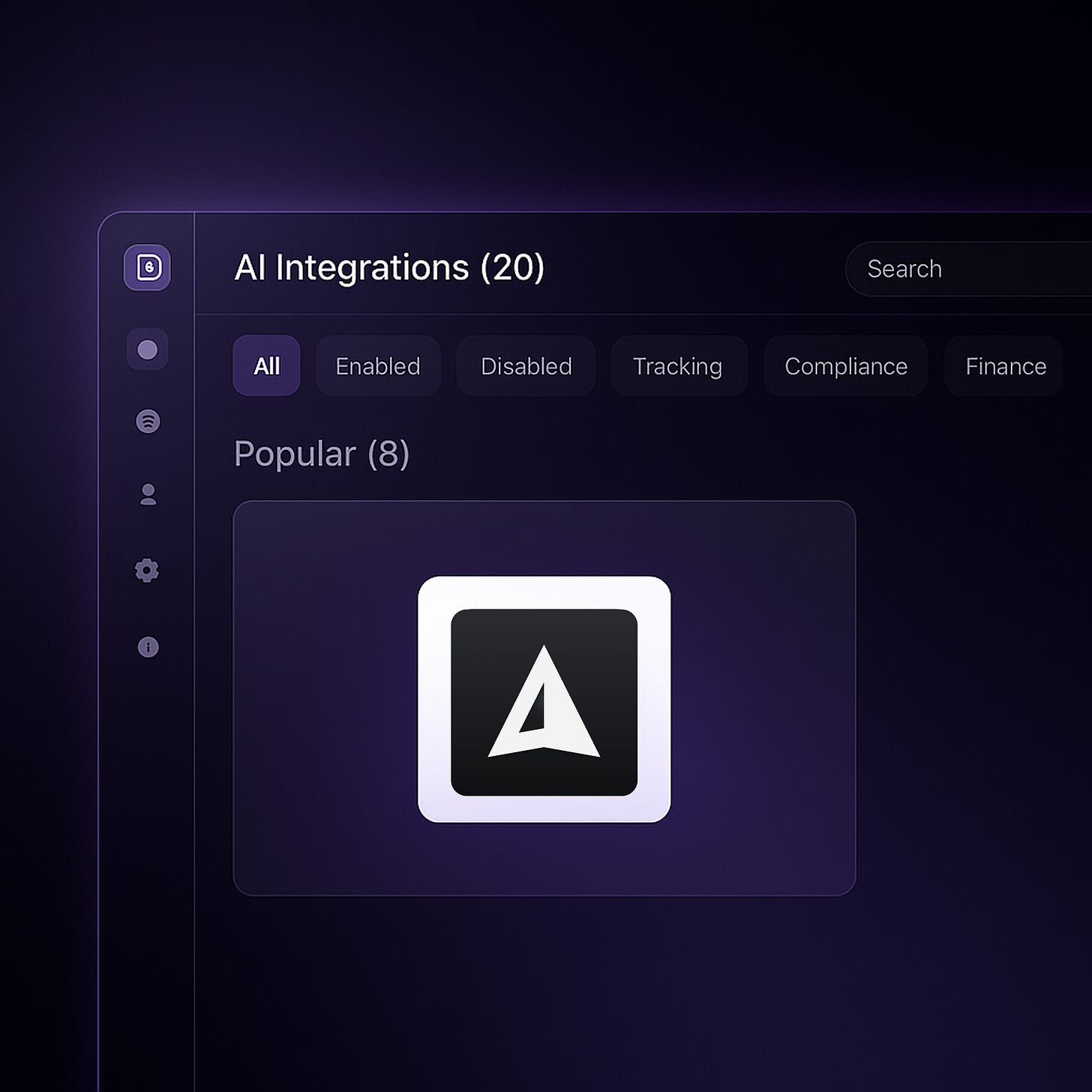Why AI Integration Is Failing (And How to Fix It)
Everyone's buying AI tools. Almost nobody's actually using them right.
Your company probably has at least three different AI subscriptions right now. ChatGPT for the marketing team, some AI writing tool for content, maybe an AI assistant for customer service. You're spending thousands on the promise of increased productivity.
Most teams are still jumping between dozens of different apps to get their work done, manually copying and pasting information, and spending more time managing their tools than actually getting the work done.
The real AI problem nobody talks about
The issue isn't that AI doesn't work. It's that most companies are treating AI like another standalone tool instead of what it actually needs to be: the connective tissue that makes all your other tools smarter.
We recently looked at data from thousands of productivity software decision-makers, and the story is the same everywhere. Teams are excited about AI's potential, but they're stuck dealing with the same old problems:
Searching through disconnected systems for information that definitely exists somewhere
Manually prepping data before AI tools can even look at it
Getting AI outputs that require so much review you might as well have done it yourself
Paying for multiple AI subscriptions that don't talk to each other
The companies struggling most aren't the ones without AI tools. They're the ones with too many AI tools that don't work together.
What successful teams actually do differently
Here's what we learned from teams that are actually getting results from AI:
They integrate, don't add. Instead of buying another AI tool, they found ways to make AI work with what they already have. The best AI implementations feel invisible because they're built into existing workflows.
They solve real problems, not imaginary ones. Before adding any AI, they mapped out their actual daily friction points. Where do people waste time? What information is hard to find? What manual work happens repeatedly?
They start incredibly simple. The teams seeing the biggest wins started with basic stuff: AI that summarizes meeting notes, searches across their existing tools, or helps write first drafts. No complex workflows or custom training required.
The three AI moves that actually work
Want to stop wasting money on AI subscriptions that gather digital dust? Here's what teams are doing that gets real results:
1. Pick one source of truth for AI to work with
Stop trying to get AI to work across fifteen different platforms. Pick your main knowledge hub, whether that's Notion, Confluence, or whatever your team actually uses, and focus on making AI work really well there first.
2. Automate the boring stuff first
Don't start with creative work or complex decision-making. Start with the repetitive tasks your team already does: summarizing documents, extracting key points from meetings, searching for information across different sources. Build confidence with easy wins.
3. Make AI part of existing habits
The best AI integrations happen inside workflows your team already follows. Add AI to your weekly review process, build it into project templates, or integrate it with tools people use daily. Don't create new processes for AI.
Why most companies get this backwards
Too many teams approach AI like they're buying a magic productivity wand. They expect to add one tool and suddenly everyone works 50% faster.
That's not how productivity actually works.
Real productivity improvements come from reducing friction in systems people already use. AI works best when it eliminates the annoying, time-consuming parts of work, not when it tries to replace human judgment entirely.
The companies getting AI right treat it like infrastructure, not like a shiny new feature. It's the invisible layer that makes everything else work better.
What this means for your team
Here's the truth: if your team isn't seeing real productivity gains from AI yet, it's probably not because you need better AI tools. It's because you're thinking about the problem wrong.
Stop asking "What AI tool should we buy?" and start asking "What stupid, repetitive work are we doing that AI could handle?"
Stop trying to find the perfect AI solution and start making your existing tools work better together.
Stop waiting for AI to get smarter and start building systems that help your team actually use what's already available.
The teams winning with AI right now are the ones that made AI feel natural, useful, and integrated into work that already matters.
How Needle fixes the integration problem
This is exactly why we built Needle. Instead of adding another AI tool to your already crowded software stack, Needle connects your existing content and makes it intelligent.
Upload your documents, connect your knowledge bases, and suddenly you have AI that actually understands your specific context. No more jumping between apps to find information. No more manually feeding context to generic AI tools. No more starting from scratch every time you need insights from your own data.
Your team's collective knowledge becomes instantly searchable and conversational. Ask questions, get answers based on what you actually know and have documented.
Ready to stop wasting money on AI tools that don't deliver? Start with one simple question: what's the most annoying, repetitive task your team does every week? Then find the simplest solution that makes that specific problem go away.
Small improvements in the right places beat ambitious projects that never get finished. Every time.
See how Needle turns your scattered information into intelligent, searchable conversations. Try it for free and experience AI that actually understands your team's specific context and knowledge.



